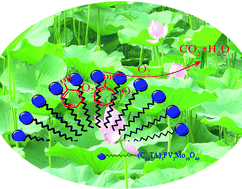Degradation of phenol accumulated in a micellar molybdovanadophosphate nanoreactor by air at ambient temperature and atmospheric pressure†‡
Abstract
A novel route to facilitate the

* Corresponding authors
a
Key Laboratory of Polyoxometalate, Science of Ministry of Education, Faculty of Chemistry, Northeast Normal University, Changchun, P. R. China
E-mail:
wangxh665@nenu.edu.cn
Fax: (+86) 431-85099759
Tel: (+86) 431- 85099667
A novel route to facilitate the

 Please wait while we load your content...
Something went wrong. Try again?
Please wait while we load your content...
Something went wrong. Try again?
S. Zhao, C. Sun, L. Wang, X. Xu and X. Wang, Dalton Trans., 2010, 39, 5087 DOI: 10.1039/C000860E
To request permission to reproduce material from this article, please go to the Copyright Clearance Center request page.
If you are an author contributing to an RSC publication, you do not need to request permission provided correct acknowledgement is given.
If you are the author of this article, you do not need to request permission to reproduce figures and diagrams provided correct acknowledgement is given. If you want to reproduce the whole article in a third-party publication (excluding your thesis/dissertation for which permission is not required) please go to the Copyright Clearance Center request page.
Read more about how to correctly acknowledge RSC content.
 Fetching data from CrossRef.
Fetching data from CrossRef.
This may take some time to load.
Loading related content
